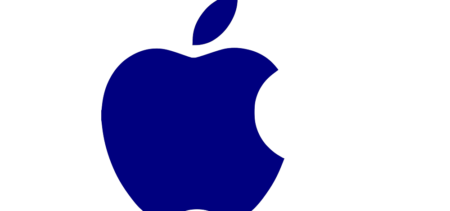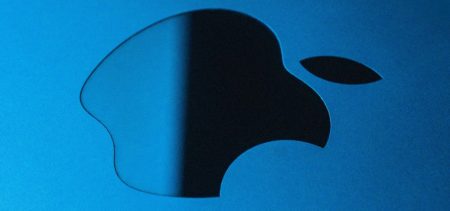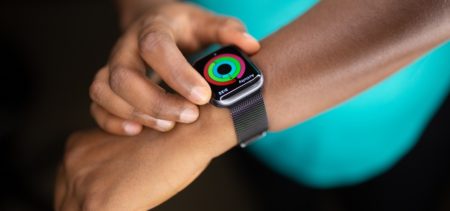Another “S” year is upon us. What does that mean? Apple just started shipping its successor to the iPhone X, the iPhone Xs (along with the new midrange Xr). As custom has it, every two years Apple releases a completely revamped iPhone – but between these releases, they only update the device internally. While not different in form, phones that were released on these ‘update’ years have brought about significant changes beyond what the eye can see. The iPhone 4s introduced us to Siri, the 5s touted the first 64-bit processor in the range, and the iPhone 6s added more depth to iOS with 3D Touch.
Now, it’s the iPhone Xs’ time to shine, yet many were left wondering after Apple’s keynote: is it really worth the upgrade, especially coming from an iPhone X? Read on to find out.
Bigger size
Let’s start with the most obvious improvement: phone/screen size. While the iPhone X only came in a 5.8” version, the custom OLED display on the Xs Max spans to 6.5”, making it the largest display ever on an iPhone, surpassing the previous Plus models by one full inch.
What does that translate to? While the current native apps don’t do that much to take advantage of the extra screen space, aside from landscape mode, third-party developers will definitely take the opportunity to enhance their app layout. Seeing more information at once comes in handy especially if you use productivity apps.
Dual SIM Capability
Many professionals or avid travelers use two separate phones: one for personal use, and one for work or a local network. While some prefer to keep these two worlds separate, dual SIM capability can make your life easier if you don’t mind merging them into one device. And if you’re an iPhone user, good news: the iPhone Xs is the first of its kind to support two phone numbers at once. But there is a catch.
The iPhone XS supports eSIM, which is currently only used in 10 countries. This technology doesn’t require a physical card, but you need to be on an eSIM-compatible network to use it. The eSIM itself is actually a chip installed inside the phone, similar to NFC. Changing the operator only requires a phone call and can be done in minutes.
So if you’re in a supported location, you might find eSIM to be one of the highlights of the Xs. Despite the availability drawback, the bottom line is that if you want two phone numbers on your iPhone, now it’s possible. For more information on eSIMs, you can check out Pocket-lint’s article.
Source: Apple.
Better camera
One of the selling points of the iPhone Xs is its camera. The new standout feature, Smart HDR, leverages multiple technologies, like faster sensors, an enhanced ISP, and advanced algorithms to bring more highlight and shadow detail to photos taken with the iPhone Xs. Smart HDR makes a huge difference in low light conditions especially. Apple also improved Portrait Mode, adding a software-generated bokeh-like effect that can even be adjusted after taking the photo. Check out a detailed comparison, with examples, here.
The improved camera will definitely make a difference for photographers or anyone that creates photos and video for websites and social media. Smartphone cameras won’t reach DSLR levels of quality anytime soon, but the iPhone Xs is definitely a step in the right direction.
Higher max storage capacity
The iPhone X’s internal storage only went up to 256GB of flash memory. Given its capacity to shoot high-quality photos and 4K video, it only makes sense that the Xs now tops up at 512GB. Also considering that the iPhone’s storage capacity can’t be expanded using SD cards, having an extra 256GB out of the box is especially welcome.
But why is internal storage still useful in the age of the cloud? First of all, for users that need to shoot photos and videos, as well as edit them on the go and in places where internet access may be spotty at best. Having the extra space also comes in handy if you use your iPhone to store large files.
Unfortunately, one drawback is that the 512GB iPhone Xs will run you $1,349 for the SIM-free version, $200 more than the 256GB one. As you’d expect, the 512GB Xs Max carries an even heftier price tag: $1,449. It’s up to you to decide whether the extra space is worth it.
Needless to say, there’s more to the iPhone Xs than the upgrades we’ve highlighted above. The new 7nm A12 Bionic chip delivers improved performance and better battery life, as well – not dramatically higher than the iPhone X at the moment, but enough to ensure that the Xs will run smoothly for at least a few years. As part of their sustainability commitments, Apple also stated that it would offer support for its devices for as long as possible to delay the need to upgrade. In fact, the company has already made good on that promise: the iPhone 5s, which was released in 2013, recently received an update to iOS 12, and according to Ars Technica, the new OS actually made the phone run faster. So much for planned obsolescence.
All in all, the iPhone Xs is a solid device no matter how you look at it. Is it worth upgrading from an iPhone X? Most likely not. But anyone using an older device would definitely see a difference.














































